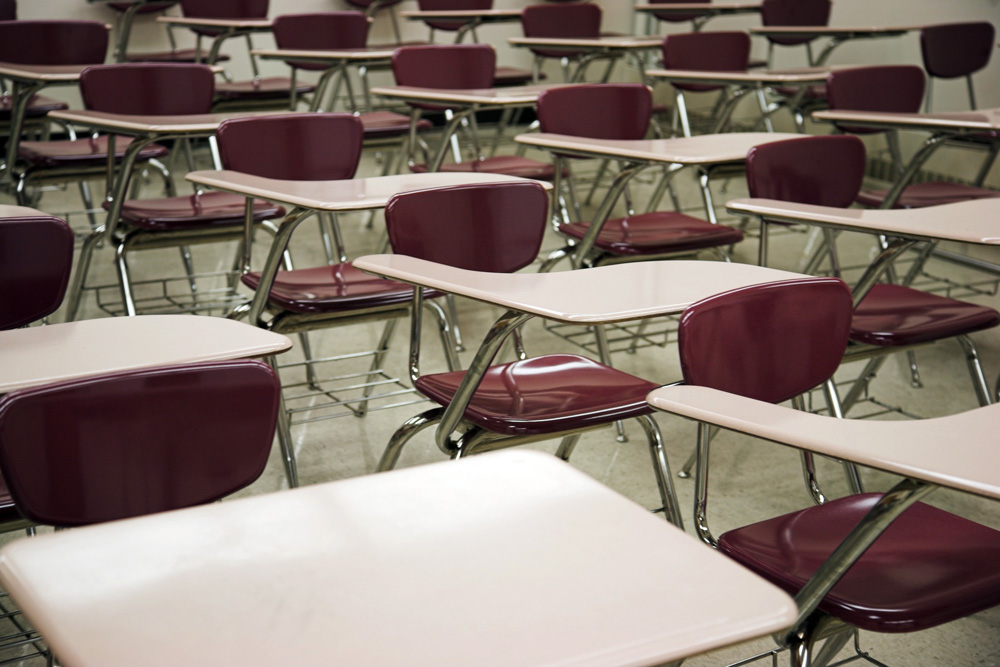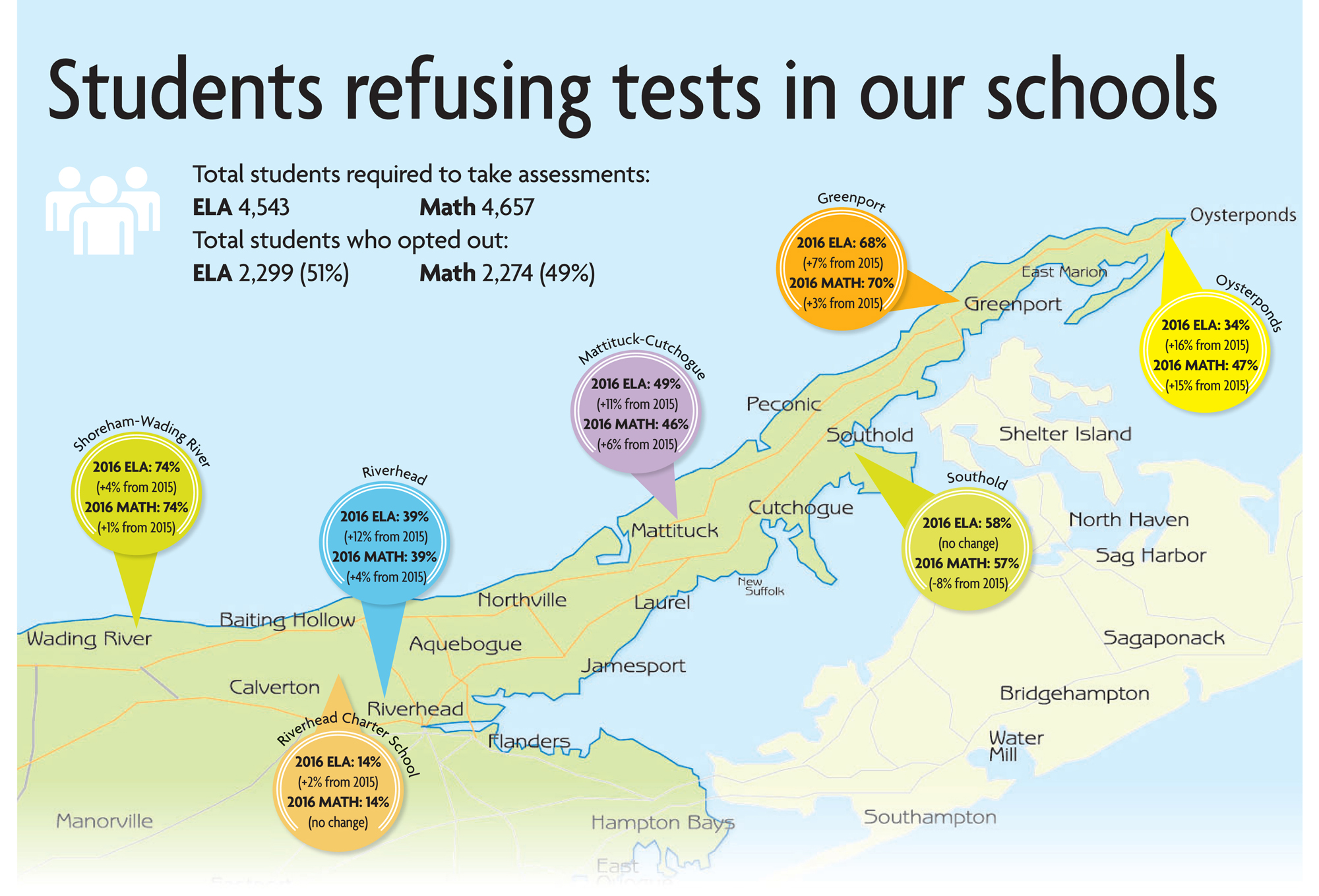Even after compromises, opt-out movement gains steam locally


In response to the large numbers of students who have opted out of state-mandated testing in previous years, New York State education officials recently compromised by agreeing to hold off until 2020 on tying test results to teacher ratings.
This concession, however, has not reduced the opt-out rate among local students.
Across the North Fork, where the tests were administered earlier this month, 51 percent of 4,543 third- through eighth-graders refused to take the English Language Arts exams and 49 percent of 4,657 declined to sit for the math exams. (Some districts don’t count a small percentage of eighth-graders as refusing the tests because they chose to take math Regents exams instead.)
For the past few years, parents and educators have rallied against the state’s latest system of so-called high-stakes testing, which ties teacher evaluations to the controversial Common Core standards. Their principal strategy has been the opt-out movement, under which students refuse to take mandated assessment tests.
[Scroll down to view map]
[Related: Local superintendents’ predictions on the future of state testing]
The Oysterponds School District, which runs a pre-K through sixth-grade program, recorded the highest increase in test refusals among local schools, with 13 out of 38 students refusing to take ELA assessments — a 16 percent increase — and 18 out of 38 declining to sit for the math exam, a 15 percent jump.
Oysterponds Superintendent Richard Malone described the state’s rushed approach to implementing new standards and a lack of teacher input on the testing design as the main reasons many people see little value in New York’s student assessment model.
“I think once that’s accomplished, you’ll see a number of the students back taking the tests,” he said.
In the Mattituck-Cutchogue School District, Superintendent Anne Smith said refusal numbers rose over last year by 11 percent for ELA and 6 percent for math, with 249 out of 506 students opting out of ELA and 233 out of 506 students refusing to take the math exam.
Dr. Smith said the district will continue to support the Suffolk County Superintendents’ Association in its collaboration with the state Department of Education on changing testing, standards and the teacher evaluation process.
In December, the state Board of Regents, which drafts education guidelines for New York public schools, responded to high-stakes testing concerns by imposing a four-year moratorium on using student test scores to evaluate teachers and principals.
Jonathan Burman, spokesman for state Department of Education Commissioner MaryEllen Elia, said there’s been an ongoing campaign to reach parents, teachers and students to explain to them “the improvements we’ve made to the state assessments and the important role they can play in improving instruction.”
“The decision of whether a student should take the state assessments is ultimately for that student’s parent or parents to make,” Mr. Burman said. “But we want to be certain that everyone has all of the information they need to make an informed decision.”

Some who oppose the state’s direction in education say the recent changes aren’t enough. They include David Gamberg, superintendent for both Greenport and Southold school districts, who has been an outspoken critic of Common Core.
“My sense is that concerns regarding testing will not diminish,” Mr. Gamberg said. “No, I do not advocate for the elimination of testing in schools. However, we must look at the evidence of what testing should look like and how it should be used effectively.”
In Greenport, 188 out of 278 students refused to take this year’s ELA exams and 197 out of 281 students declined to take the math test. The numbers reflect increases of 7 percent and 3 percent, respectively, over last year.
In Southold, 210 of 361 students — the same percentage as last year — opted out of ELA. But the opt-out rate for the math exam dropped by 8 percent, with 204 out of 361 declining the test.
Riverhead Charter School executive director and principal Raymond Ankrum described the rollout of the new standards as flawed since the progression didn’t start with a cohort of kindergartners.
At his school, 31 out of 220 students opted out of both assessments, representing a 2 percent increase for ELA and the same as last year for math.
Currently, federal law requires schools to achieve at least 95 percent student participation in the standardized tests or risk losing federal funding. However, such action has yet to be taken against any school district by the U.S. Department of Education.
Mr. Ankrum said that although he hopes the state will make the necessary adjustments to get “superintendents back on board and advocating for accountability and growth measurement,” he believes the fear of losing federal aid remains a concern among poorer schools districts.
“My prediction is that in affluent areas around the country, the opt-out movement will continue to grow,” he said.
Top photo: (Credit: Flickr/dcJohn)








